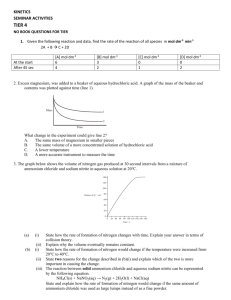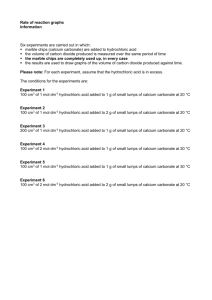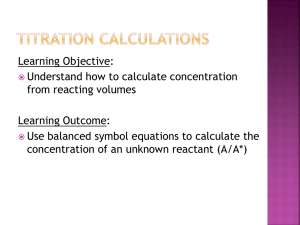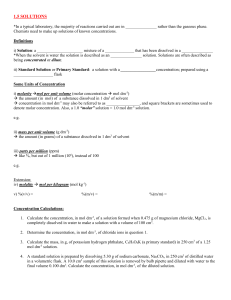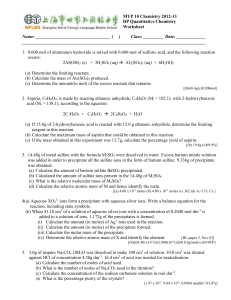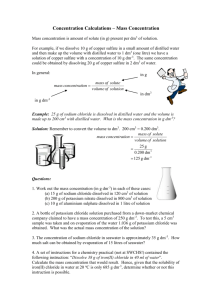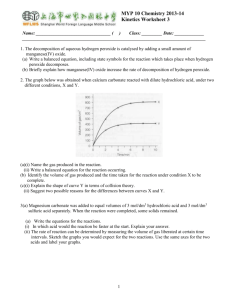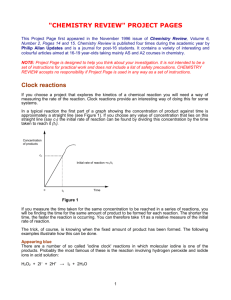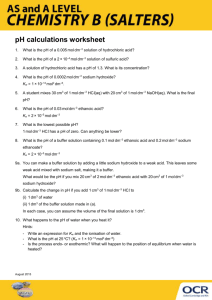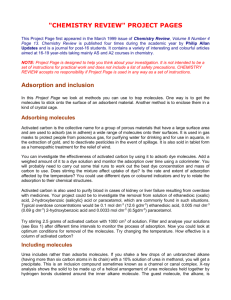Unit 1: Quantitative Chemistry IB Topic 1 AP Chapters 1
advertisement
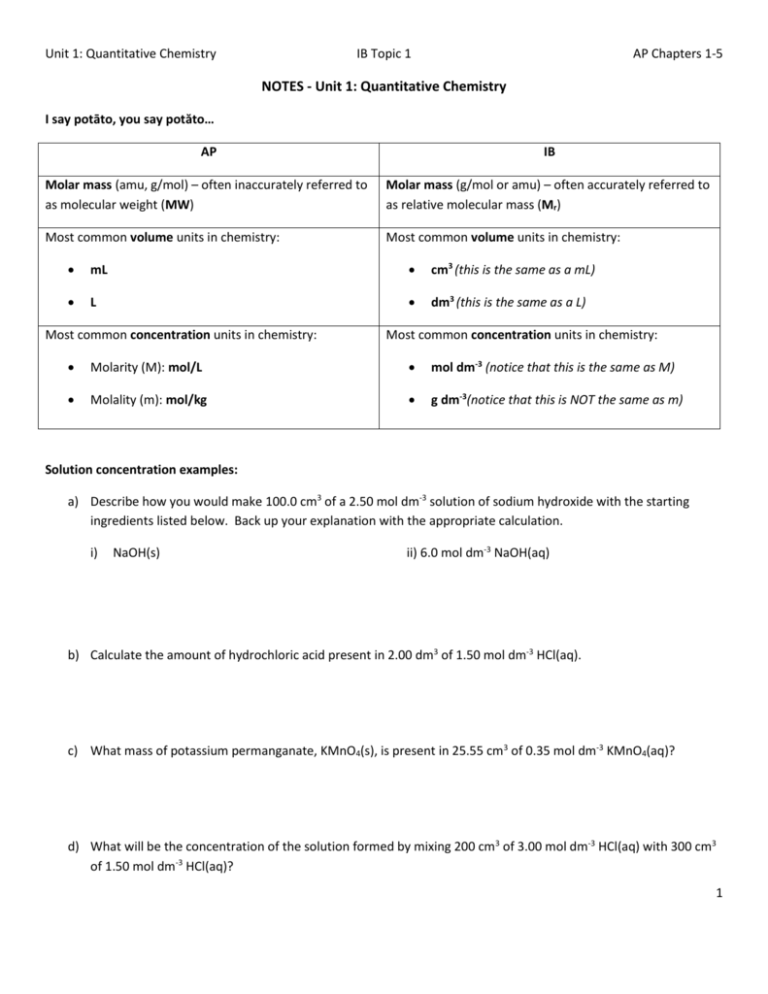
Unit 1: Quantitative Chemistry IB Topic 1 AP Chapters 1-5 NOTES - Unit 1: Quantitative Chemistry I say potāto, you say potăto… AP IB Molar mass (amu, g/mol) – often inaccurately referred to as molecular weight (MW) Molar mass (g/mol or amu) – often accurately referred to as relative molecular mass (Mr) Most common volume units in chemistry: Most common volume units in chemistry: mL cm3 (this is the same as a mL) L dm3 (this is the same as a L) Most common concentration units in chemistry: Most common concentration units in chemistry: Molarity (M): mol/L mol dm-3 (notice that this is the same as M) Molality (m): mol/kg g dm-3(notice that this is NOT the same as m) Solution concentration examples: a) Describe how you would make 100.0 cm3 of a 2.50 mol dm-3 solution of sodium hydroxide with the starting ingredients listed below. Back up your explanation with the appropriate calculation. i) NaOH(s) ii) 6.0 mol dm-3 NaOH(aq) b) Calculate the amount of hydrochloric acid present in 2.00 dm3 of 1.50 mol dm-3 HCl(aq). c) What mass of potassium permanganate, KMnO4(s), is present in 25.55 cm3 of 0.35 mol dm-3 KMnO4(aq)? d) What will be the concentration of the solution formed by mixing 200 cm3 of 3.00 mol dm-3 HCl(aq) with 300 cm3 of 1.50 mol dm-3 HCl(aq)? 1 Unit 1: Quantitative Chemistry IB Topic 1 AP Chapters 1-5 Examples from past IB exams: Example 1 (IB 2005): When a small quantity of strongly smelling gas such as ammonia is released into the air, it can be detected several metres away in a short time. a) Use the kinetic molecular theory to explain why this happens. b) State and explain how the time taken to detect the gas changes when the temperature is increased. Example 2 (IB 2005): The percentage composition by mass of a hydrocarbon is C = 85.6% and H=14.4%. a) Calculate the empirical formula of the hydrocarbon. b) A 1 g sample of the hydrocarbon at a temperature of 273 K and a pressure of 1.01 x 105 Pa (1.00 atm) has a volume of 0.399 dm3. i. Calculate the molar mass of the hydrocarbon. ii. Deduce the molecular formula of the hydrocarbon. 2 Unit 1: Quantitative Chemistry IB Topic 1 AP Chapters 1-5 Example 3 (IB 2003): Sodium reacts with water as follows: 2Na(s) + H2O 2NaOH(aq) + H2(g) 1.15 g of sodium is allowed to react completely with water. The resulting solution is diluted to 250 cm 3. Calculate the concentration, in mol dm-3, of the resulting sodium hydroxide solution. Example 4 (IB 2004): 100 cm3 of ethane, C2H4, is burned in 400 cm3 of oxygen, producing carbon dioxide and some liquid water. Some oxygen remains unreacted. a) Write the equation for the complete combustion of ethane. b) Calculate the volume of carbon dioxide produced and the volume of oxygen remaining. Example 5 (IB 2004): a) Write an equation for the formation of zinc iodide from zinc and iodine. b) 100.0 g of zinc is allowed to react with 100.0 g of iodine producing zinc iodide. Calculate the amount (in moles) of zinc and iodine, and hence determine which reactant is in excess. c) Calculate the mass of zinc iodide that will be produced. 3 Unit 1: Quantitative Chemistry IB Topic 1 AP Chapters 1-5 Example 6 (IB 2004): 27.82 g of hydrated sodium carbonate crystals, Na2CO3xH2O, were dissolved in water and made up to 1.000 dm3. 25.00 cm3 of this solution were neutralized by 48.80 cm3 of hydrochloric acid of concentration 0.1000 mol dm-3. a) Write an equation for the reaction between sodium carbonate and hydrochloric acid. (HINT: acid + carbonate salt + water + CO2) b) Calculate the molar concentration of the sodium carbonate solution neutralized by the hydrochloric acid. c) Determine the mass of sodium carbonate neutralized by the hydrochloric acid and hence the mass of sodium carbonate present in 1.000 dm3 of solution. d) Calculate the mass of water in the hydrated crystals and hence find the value of x. 4
